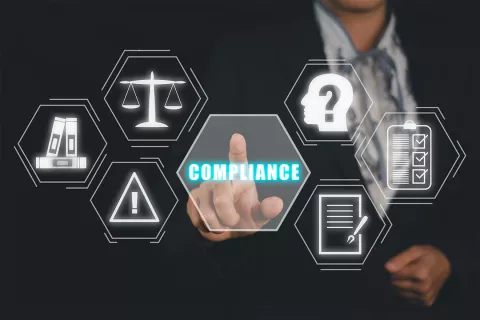
Electronic Labeling (e-labeling) is a medical device labeling alternative to traditional paper labeling. It entails the use of electronic media such as CD-ROMs, DVDs, or websites to provide consumers/users with label information. There are numerous benefits of e-labeling in the medical device industry. The most significant advantages are the following:
- Improves accessibility by allowing healthcare providers and patients to access critical labeling information whenever and wherever required.
- Reduces the risk of errors caused by misreading or misinterpreting printed labels, which can lead to dangerous errors in device usage.
- Lowers the costs of printing, shipping, and storing physical labels.
- Reduces the environmental impact of printing and discarding physical labels.
- Assists manufacturers in meeting the Regulatory requirements for providing accurate and up-to-date label information.
- Allows manufacturers to update product labeling easily and quickly without them having to recall and repackage the physical products.
While some countries do not have regulations mandating e-labeling in the medical device industry, many other countries have in place regulations that do ask for e-labeling. The United States Food and Drug Administration (US FDA) requires medical device manufacturers in the US to provide e-labeling in a standardized format. On the other hand, the medical device regulation in the European Union (EU) mandates an electronic Unique Device Identifier (UDI). Other countries such as Canada, Australia, and Japan also have in place laws that require e-labeling. However, these requirements may vary from one country to another, and thus, manufacturers must adhere to the specific requirements of the respective markets where their products are sold.
The US FDA allows medical device manufacturers to use e-labeling as an alternative to paper labeling, given that manufacturers are compliant with the following regulations:
- Accessibility: The US FDA medical device e-labeling must be available to consumers/users, even when no internet connection is available. Thus, the device must have a built-in or removable storage device containing the e-labeling information, or the information must be available for downloading from the manufacturer’s website.
- Retrievability: Consumers/users should be able to retrieve the e-labeling information easily. The manufacturer must provide clear, detailed, and precise instructions for accessing the information, as well as ensure that the information is easily accessible.
- Readability: The manufacturer must present the e-label in a clear and readable format. The font size and style should be appropriate for the intended user, and the information presented should be easy to comprehend.
- Compatibility: The manufacturer must provide the e-label in a format that is compatible with widely available hardware and software. Moreover, they need to provide it in a file format that most computers and devices can access, such as PDF or HTML.
- Physical Label: The physical label of the device must include a statement highlighting the fact that all the e-labeling information and clear instructions for accessing the information are available. In addition, the physical label should include basic device information, such as the device name, model number, and manufacturer’s details.
- Paper Copy: Upon request, the manufacturer should be able to provide a paper copy of the e-label and ensure that it is up-to-date.
- Record keeping: The manufacturer must keep records to demonstrate that the e-label is accurate and up to date, and they should be able to make the records available to the US FDA upon request.
Challenges of E-labeling Medical Devices in the Fast-paced Industry
While there are several potential benefits of medical device e-labeling, such as reduced paper waste and greater flexibility in updating product information, its practical application in today’s fast-paced industry is dependent on the following three (03) factors:
- The Accessibility and Availability of Technology: These two (02) are critical factors. While electronic displays are becoming more common and affordable, not all products or industries may have the infrastructure required to support e-labeling. A small business with limited resources, for instance, may be unable to invest in the technology required to implement e-labeling.
- Regulatory Requirements: Some industries may be subject to specific labeling regulations that require printed labels and, thereby making e-labeling impractical. However, many Regulatory bodies are starting to recognize e-labeling as a viable alternative to traditional labeling, which could make it the practical option in more and more industries.
- Consumer Acceptance and Usability: These are the two (02) key factors in determining the viability of e-labeling. When it comes to accessing product information, consumers may have different preferences and needs, and e-labeling may not be appropriate for all products or situations. Products that require frequent handling or exposure to water, for instance, may not be suitable for e-labeling.
Conclusion
To conclude, the medical device industry can benefit from e-labeling since it can help provide accurate and up-to-date product information, reduce paper waste, and streamline the entire labeling process. However, its applicability is dependent on Regulatory compliance, availability of technology, and medical device usability. While e-labeling has the potential to revolutionize the medical device industry, it must be approached with caution, and only then can it succeed.
Are you a medical device manufacturer willing to streamline your labeling process, reduce paper waste, and meet the Regulatory requirements for e-labeling? Reach out to us for our Regulatory experts’ assistance. Stay informed! Stay compliant!









